What to Know: We independently review products we recommend. If you click on links we provide, we may earn a commission. Learn more.
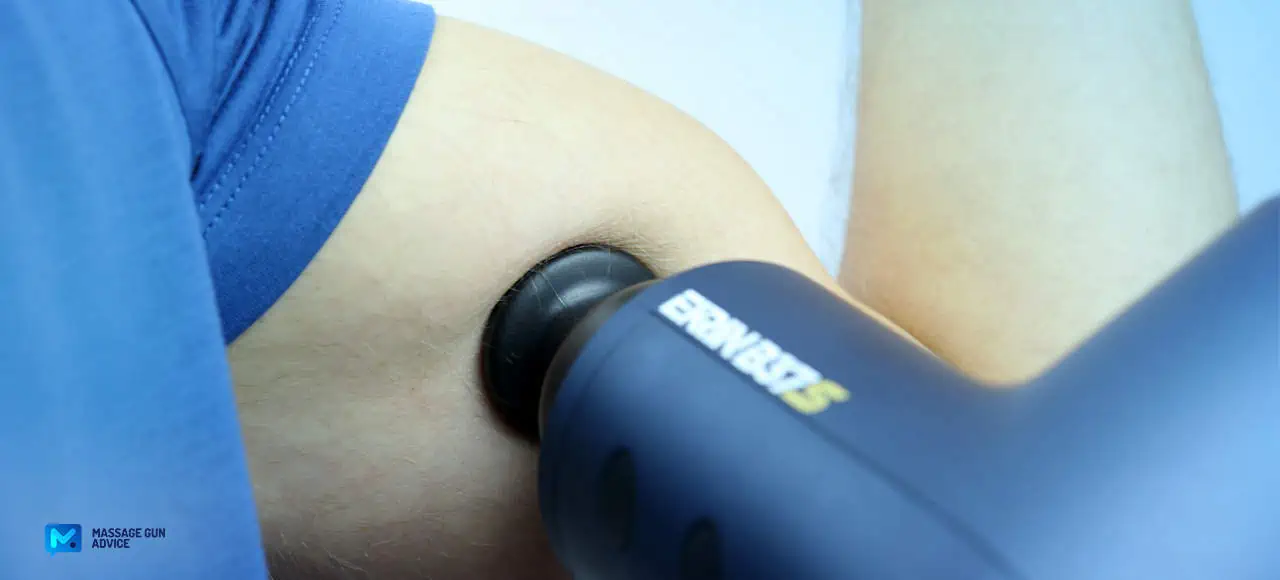
Can You Use a Massage Gun on a Pulled Muscle?
Here is the question: Can you use a massage gun on a pulled muscle or muscle strain?
The short answer is NO; using a massage gun on a pulled or torn muscle is forbidden.
But why is it forbidden, and who forbids it?
Well, first, because it’s unhealthy, and second, we’re not the ones forbidding it. We’re massage gun users like you. We know how effective massage guns are in helping muscles recover. But we know from experience that they’re not good to use on injuries, and can make things worse.
Is it just pulled muscles, or are there other injuries you should worry about? Well, that’s what we’re here to find out.
Read on!
Disclaimer
We’re writing this article from a consumer’s point of view. However, we work with licensed medical professionals who review our content to ensure we provide the right advice.
We recommend talking to a doctor before using a massage gun – especially when you have injuries.
Pulled Muscles, Strains, and Sprains. Which is Which?
So, you suspect you have pulled or torn something, a muscle or a ligament, and are wondering does a massage gun help? Before you can fire the massage gun away, you might want to first learn what sort of injury you have.
Let us discuss some of these.
Pulled Muscle or Muscle Strain
So which one is it; a strain or a sprain? Often people confuse the two. The easiest way to understand these is to look at what is getting affected.
For a strain, the muscle is involved. We call it a strain when the muscle is stretched beyond normal. Picture an elastic rubber being stretched to a point it can no longer go back to its previous shape.
Note A strain is what people often call a pulled muscle.
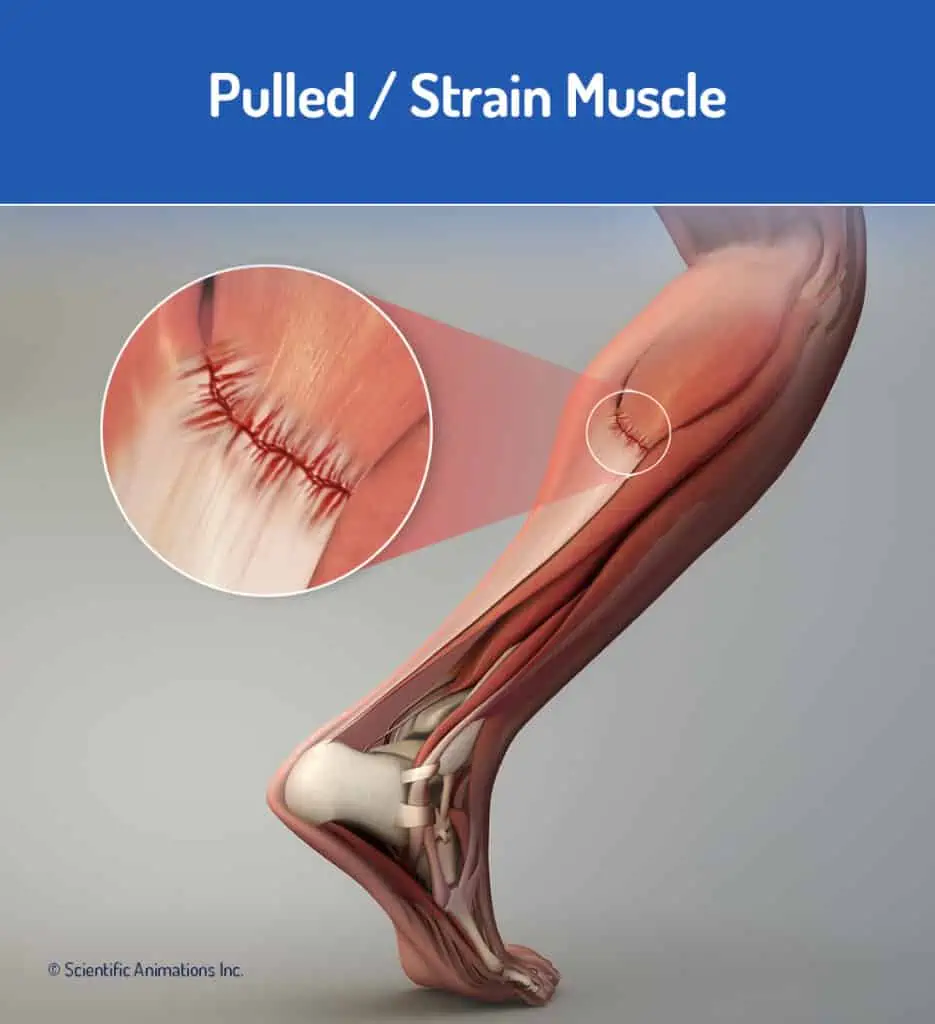
For a sprain, the ligament or ligaments are affected – ligaments are bands that connect two bones. Sprains also occur when the ligaments are stretched too far, often when there is a sudden forceful pull against them.
We’ll focus more on a pulled muscle today. However, it’s important to note that both injuries may exhibit the same symptoms. This is why we recommend seeking professional medical advice before self-medicating.
Let’s see what causes a pulled muscle.
Causes of Pulled Muscle
A muscle can strain when:
- When muscles lose flexibility.
- When you engage in intense physical activity without properly warming up.
- When the muscles are already fatigued.
- You could get a pulled muscle when walking.
Note that not all muscle strains are the same; some are more severe than others. When a pull happens without warning, it could result in what is called acute muscle strain. Such strains are caused by injuries, trauma, or by an accident.
A pulled muscle can become chronic when you engage in a repetitive motion like playing sports or when you consistently have a poor posture. How do you know you have pulled a muscle?
Symptoms of a Pulled Muscle
Muscle strains are no joke; they can cause discomfort in different ways. Here are some examples;
- Visible bruising, redness, or swelling
- The muscle cramps and becomes sore
- The muscle becomes weak and stiffens
- You can barely move
- The affected area is painful even when the area is rested
These are only a few things that can help you identify a pulled muscle. As discussed above, muscle strains can be moderate or severe. Moderate strains usually disappear within a few weeks.
However, severe strains can stay around for a month or more. In this case you will require specialized treatment.
Can You Use a Massage Gun on a Pulled Muscle?
Here comes the big question; can I use a massage gun on strained muscle? After all, some are moderate, right?
Well, we understand that to some degree, massage therapy can help speed the recovery of a pulled muscle. However, your injury is probably still fresh, and you may not know what to do.
The thing is, a pulled muscle can be pretty painful, and the massage gun thuds or vibrations may make the situation worse.
It’s recommended that you apply the PRICE (Protection, Rest, Ice, Compression, Elevation) method 1 to treat a pulled muscle. It’s recommended that you see a doctor for further treatment.
If you must do something, then you can only apply gentle pressure using your hands around the injury and not directly on it.
But is it entirely forbidden to use vibration therapy to treat a pulled muscle? No. Studies indicate2 that vibration therapy (as part of the overall treatment) can help athletes regain strength and flexibility after suffering from a pulled muscle. Vibration therapy stimulates the sensory receptors and decreases inflammatory cells. This can help speed up the recovery time.
But we know that not all massage guns are good for vibration therapy. Most are too intense for that.
In this case we would recommend using massage guns with lowest amplitude (definitely not a Theragun). Ideally, go for a mini massage gun.
Can You Use Theragun on Pulled Muscle?
We cannot skip Theraguns when discussing massage guns – they are the king of these awesome devices.
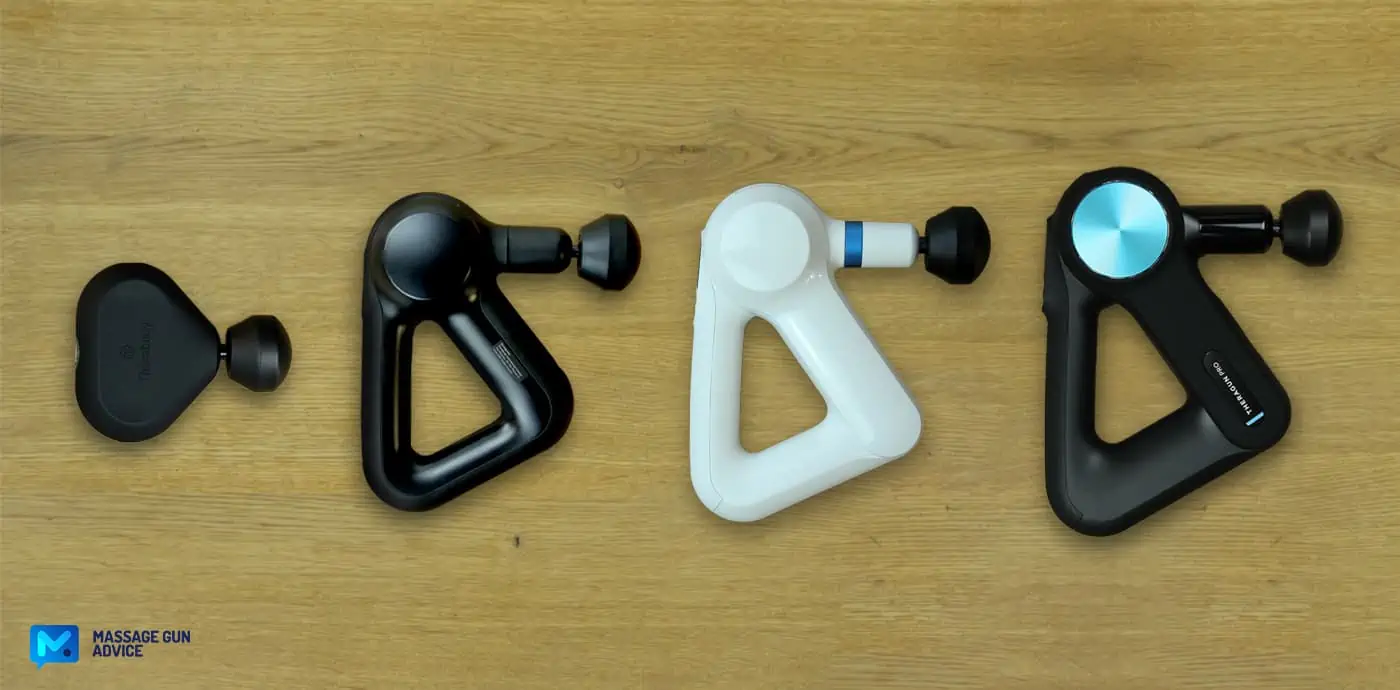
Theraguns are characterized by high amplitudes and strong stall force. This means that you will rarely find a vibrating Theragun (except the TheraFace PRO, the one for face, which has to be tender for obvious reasons).
Since we have said it’s a no-no for a massage gun on a pulled muscle, you don’t have to add salt to injury by using Theragun on pulled muscle.
That said, Theraguns are effective tools for DOMS treatment. You can use them for lymphatic drainage, reduction of muscle soreness, warming up, and anything else, but never on a pulled muscle. You risk aggravating the injury because of their punchy nature.
Remember as recommended above, you might only be able to use a small vibrating massage gun in late stage of the healing process to massage your muscle gently.
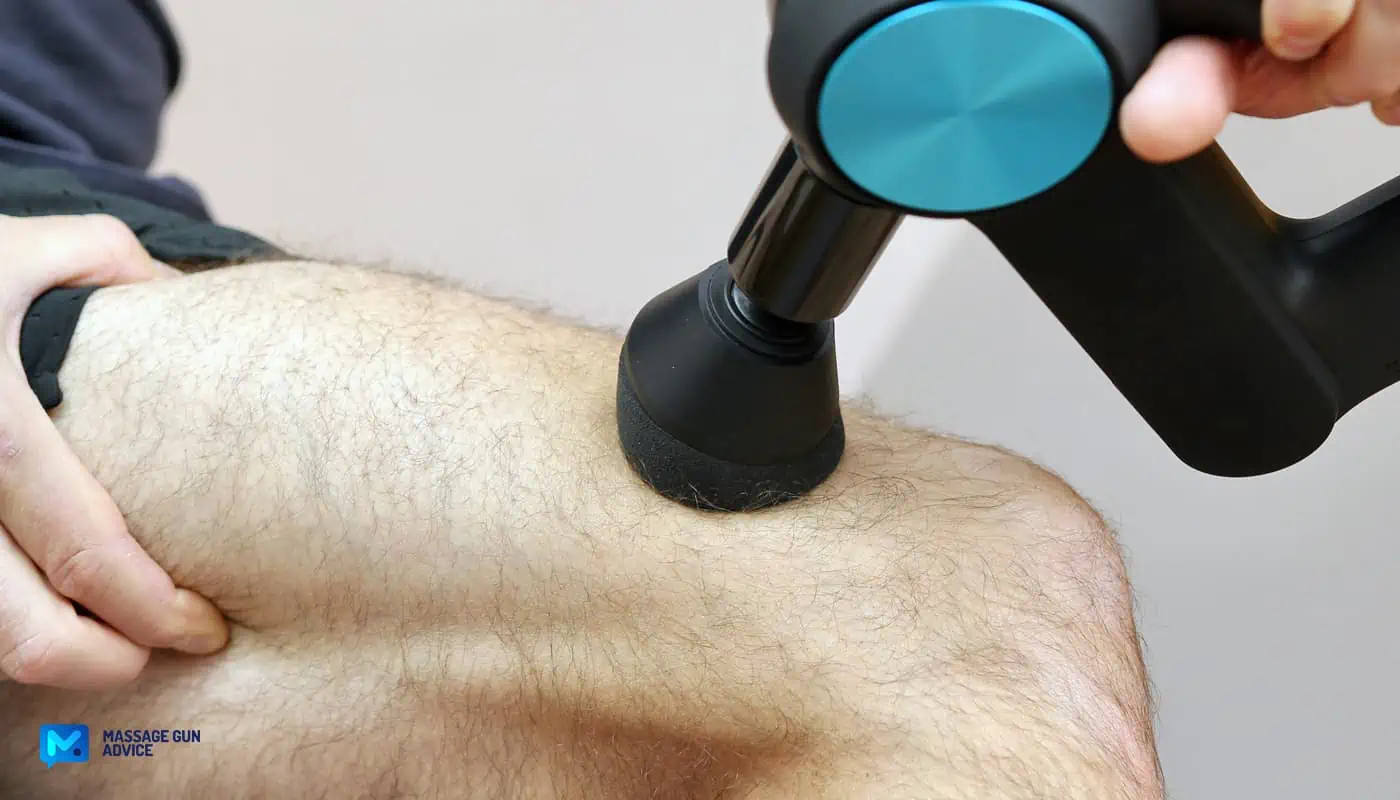
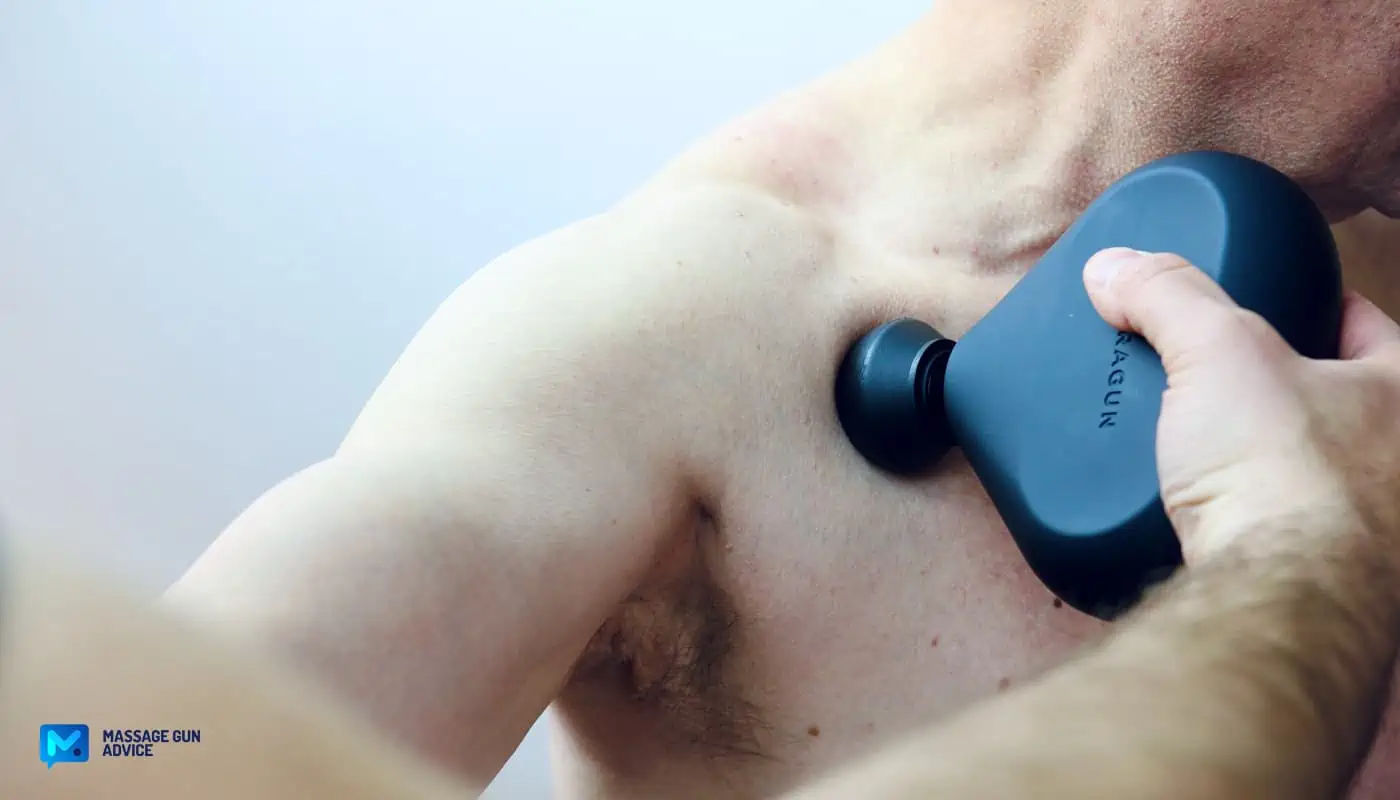
Read More To get a more comprehensive understanding of Theraguns, make sure to explore our in-hand reviews that provide detailed specifications, multiple photos, and comparisons with other massage guns.
Can You Massage a Pulled Muscle Any Other Way?
Yes, but it shouldn’t be a DIY massage. Studies indicate that a therapeutic massage may help alleviate the symptoms of a pulled muscle by increasing blood flow to the affected tissues3,4.
However, this should only be done by a qualified physiotherapist. You will have to talk to your doctor first before attempting this.
It’s worth noting that if the area is too sensitive, then you should postpone the treatment for about a week and let the injury rest. You can then begin to gently massage the surrounding area to help with the pain and improve motion.
Conclusion
So, can you use a massage gun on a pulled muscle? We advise against using them on injuries. Don’t hurt yourself, and don’t risk making the injury worse. Talk to your doctor first about the different methods of treating your injury. A qualified physiotherapist will do a better job than trying it yourself.
Take care and until next read!
- 1.Bleakley C, O’Connor S, Tully M, Rocke L, Macauley D, McDonough S. The PRICE study (Protection Rest Ice Compression Elevation): design of a randomised controlled trial comparing standard versus cryokinetic ice applications in the management of acute ankle sprain [ISRCTN13903946]. BMC Musculoskelet Disord. 2007;8:125. doi:10.1186/1471-2474-8-125
- 2.Saxena A, St L, Fournier M. Vibration and pressure wave therapy for calf strains: a proposed treatment. Muscles Ligaments Tendons J. 2013;3(2):60-62. doi:10.11138/mltj/2013.3.2.060
- 3.Weerapong P, Hume P, Kolt G. The mechanisms of massage and effects on performance, muscle recovery and injury prevention. Sports Med. 2005;35(3):235-256. doi:10.2165/00007256-200535030-00004
- 4.Best T, Hunter R, Wilcox A, Haq F. Effectiveness of sports massage for recovery of skeletal muscle from strenuous exercise. Clin J Sport Med. 2008;18(5):446-460. doi:10.1097/JSM.0b013e31818837a1
Was this article helpful?
Post Update History
Here's a quick rundown of all the tweaks and edits we've made to this article to keep it accurate and up-to-date!
Current version.
Published on:
•
Written by:

Luke Deszczulka
2 Comments
Leave a Reply
Disclaimers
The views and opinions expressed on this website are those of the authors. Any content provided by our bloggers or authors is of their opinion and is not intended to malign any religion, ethnic group, club, organization, company, individual, or anyone or anything.
All product names, logos, and brands are the property of their respective owners. All company, product, and service names used on this website are for identification purposes only. Use of these names, logos, and brands does not imply endorsement.
Our policy is to make every effort to respect the copyrights of outside parties. If you believe your copyright has been misused, please provide us with a message stating your position, and we will endeavor to correct any misuse immediately.
Some of the links in this post may be affiliate links. If you click on the link and purchase the item, we may receive an affiliate commission at no extra cost to you. Learn more here.

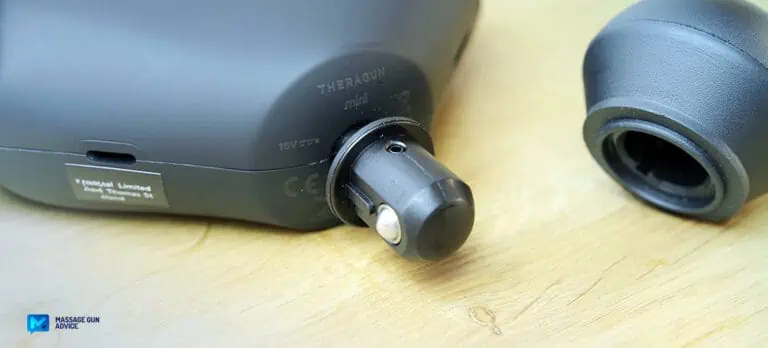
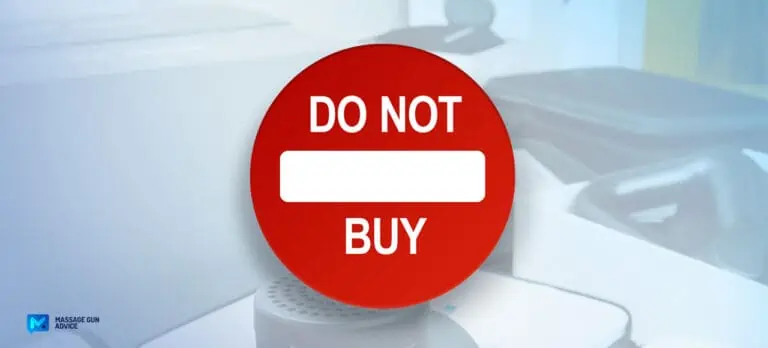
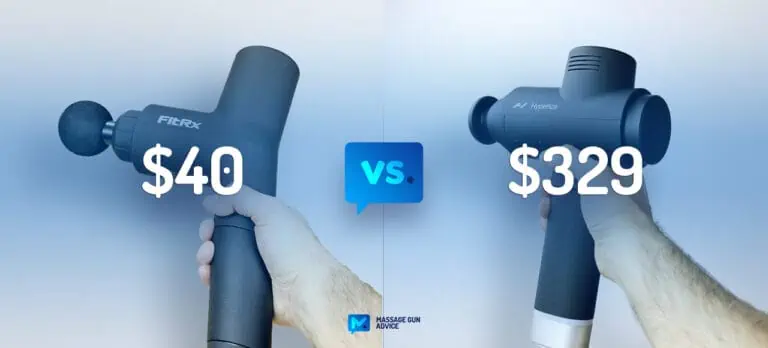
I’ve found your site to be extremely beneficial and informative. I really appreciate that you keep your reviews updated.
What is of concern to me is your lack of reviews covering newer offerings. There are a lot of new brands popping up and even some older ones that you’ve never covered. I don’t know the full extent of your review process but it would be nice to see what you think of some of the newer brands. I recently picked up a KiCA Pro massage gun that has some very novel features and would be worthy of a review by you. There are quite a few others as well.
Regards,
Thanks for the kind words, good to hear our content is helpful for you!
We’ve got KiCA on our review radar. Be sure to follow us, best on Facebook or X, so you don’t miss it when we go live. Cheers!